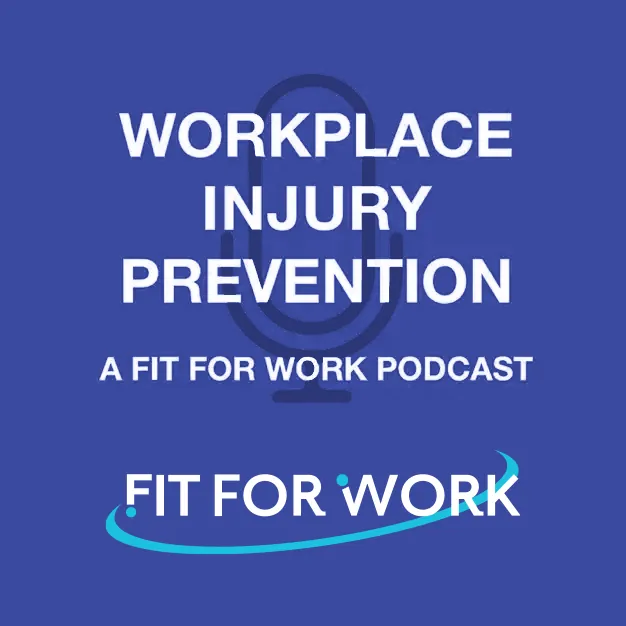While common workplace safety hazards and injury risks that have been around for decades still remain a top concern for employers, new and complex challenges pertaining to mental health and well-being have emerged to the forefront of the conversation in recent years.
In addition to basic safety concerns, leading physical and mental health conditions such as depression, musculoskeletal disorders, and other chronic diseases are increasingly contributing to medical costs and productivity losses for employers.
This has played a key role in the emergence of Total Worker Health® – a NIOSH-backed approach that aims to foster worker well-being beyond reactive injury prevention measures. Here is a closer look at what Total Worker Health (TWH) is, why it’s important, how it can benefit both employees and employers, and how organizations can go about integrating it within their existing safety programs.
What is Total Worker Health?
Total Worker Health is a holistic model aimed at combining protection from workplace safety and health hazards with the promotion of injury- and illness-prevention efforts, all with the shared goal of advancing worker well-being.
This is achieved largely through an integrated approach that prioritizes safety while simultaneously engaging in other workplace efforts, such as health design, employee training and development, and injury and illness prevention efforts.
Why is Total Worker Health Important?
While traditional safety programs have primarily focused on ensuring work is safe and that employees are protected, TWH takes this a step further by recognizing that work itself is a social determinant of health. TWH prioritizes a hazard-free work environment for all workers with the long-term vision of advancing their well-being by creating safer, healthier work.
Here are just a few of the many issues Total Worker Health might aim to address:
- Stress – High stress levels over prolonged periods of time can lead to high blood pressure, heart disease, obesity, and diabetes. Stress can also lead to depression, which is a key contributor of absenteeism, unemployment, and higher costs for employers.
- Job Insecurity – Studies show that downsizing and job insecurity are associated with poor physical and mental health, absences due to sickness, and increased use of disability pensions.
- Unpredictable or Demanding Schedules – When a role’s demands exceed the time available to meet those demands, it can cause increased anxiety, fatigue, burnout, and depression. Having more control over one’s work is beneficial for work-family balance and worker well-being.
Benefits of TWH for Employees and Employers
Total Worker Health provides numerous benefits for employees, primarily by informing the design of work and of employment conditions in a way that prioritizes safety and that improves physical and psychological outcomes.
It also helps employers in several ways. It provides a scientific evidence base that can help businesses reduce the impact and costs of injuries and illness. This can help control healthcare costs and any disruption to family life.
TWH can also lay the groundwork for improving worker creativity, innovation, and productivity by creating work and work environments that are safe, health-enhancing, meaningful, and fulfilling.
Focusing on these aspects can also give employers a leg up when it comes to recruitment, retention, employee satisfaction, and workforce culture as a whole.
Implementing TWH Within Your Organization
There are countless ways to go about fostering Total Worker Health within your workforce. Here are just a few that can have a lasting impact on your employees’ physical, mental, and emotional well-being – not to mention your business’s bottom line.
- Flexible Working Hours – Studies have shown that time-flexible work policies are often associated with multiple positive outcomes, including an increase in loyalty, fewer stress symptoms, and lower costs to employers.
- Paid Sick Leave – Workers with access to paid sick leave are 28% less likely to suffer nonfatal occupational injuries. Providing paid sick leave can also save billions in illness-related absenteeism.
- Supportive Supervision – Workers with supportive supervisors report less pain, more sleep, and have a lower risk of cardiovascular disease. Supervisor support might also help prevent reduced engagement resulting from job insecurity.
Start Fostering Total Worker Health with Fit For Work
Safety in the workplace is an evolving necessity — and it’s now about so much more than instructional videos and first aid training. It’s about getting ahead of injuries before they happen by cultivating a proactive, results-driven safety program focused on preventing your employees from becoming patients.
Fit For Work achieves this by providing employers at more than 1,750 locations across the country with strategic, consistent support to ensure their workers can experience a safer, happier, and more productive professional life. From onsite early intervention and ergonomics to safety compliance and employee testing, our services are designed to help safety managers and specialists prevent injuries while creating a more productive environment for their workers.
Contact us today to get started.
Sources:





